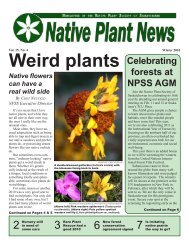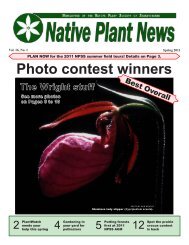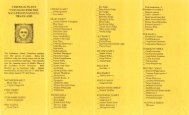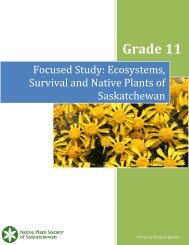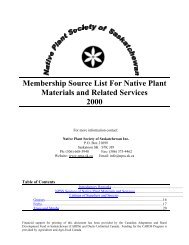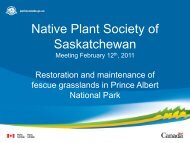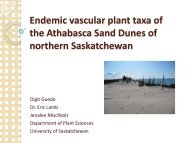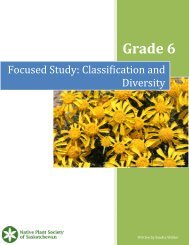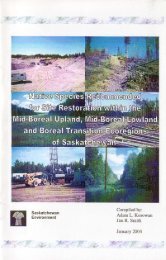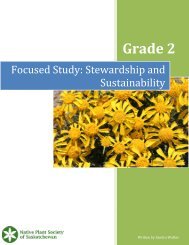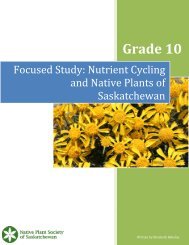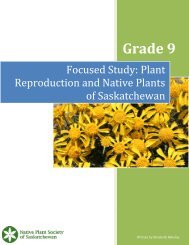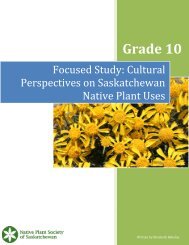Native Plants As Habitat For Wildlife - Native Plant Society of ...
Native Plants As Habitat For Wildlife - Native Plant Society of ...
Native Plants As Habitat For Wildlife - Native Plant Society of ...
You also want an ePaper? Increase the reach of your titles
YUMPU automatically turns print PDFs into web optimized ePapers that Google loves.
Winter Twig and Shrub Identification Workshop<br />
Anna Leighton<br />
Winter identification <strong>of</strong> trees and shrubs is based primarily on the buds that grow on the 6<br />
inches at the end <strong>of</strong> a branch - the area <strong>of</strong> last summer’s growth. Other surface features<br />
such as prickles thorns and bark texture are also used. Berries and fruits are useful in<br />
some groups but most fleshy fruits disappear in winter, so the buds are a more reliable<br />
feature for mid-winter identification (although a number <strong>of</strong> these also get consumed by<br />
animals and birds).<br />
Looking at buds on bare twigs will help you identify different kinds <strong>of</strong> shrubs (i.e.<br />
genera) but will not always allow you to separate species. In spite <strong>of</strong> this, a surprising<br />
amount can be learned about the landscape by looking at trees and shrubs after their<br />
confusing leaves are gone.<br />
BUDS - The two things to look for are the<br />
arrangement on the branch and bud characteristics.<br />
Arrangement. This is easy to see with the naked eve.<br />
The buds will be either alternate or paired. When<br />
paired they are called opposite.<br />
Characteristics<br />
Bud scales - The bud is tightly covered with<br />
scales to protect it from drying out in winter. If you<br />
look closely with a lens you can seethe overlapping<br />
edges <strong>of</strong> these scales and can estimate how many<br />
there are. If you see no overlapping edge, there is<br />
probably only one scale that fits like a cap over the<br />
bud.<br />
Leaf scar - underneath every bud there is a<br />
scar where the leaf that grew under the bud detached<br />
in fall. This is called a leaf scar. The shape <strong>of</strong> this scar<br />
and the number <strong>of</strong> dots (called bundle scars) on it are<br />
useful in identification.<br />
Position <strong>of</strong> the terminal bud - Another key<br />
feature is whether the bud at the end <strong>of</strong> the branch is<br />
centred on the tip (a “true” end bud) or is <strong>of</strong>fset a<br />
little to the side (a “false” end bud).<br />
THORNS and PRICKLES - These features persist in<br />
winter and are useful for separating certain groups so<br />
you should know the difference between them.<br />
Thorns are actually woody growths <strong>of</strong> the<br />
stem and are very firm and deeply seated in the<br />
branch. Prickles are more fragile outgrowths <strong>of</strong> the<br />
bark and can be removed with it.<br />
31



